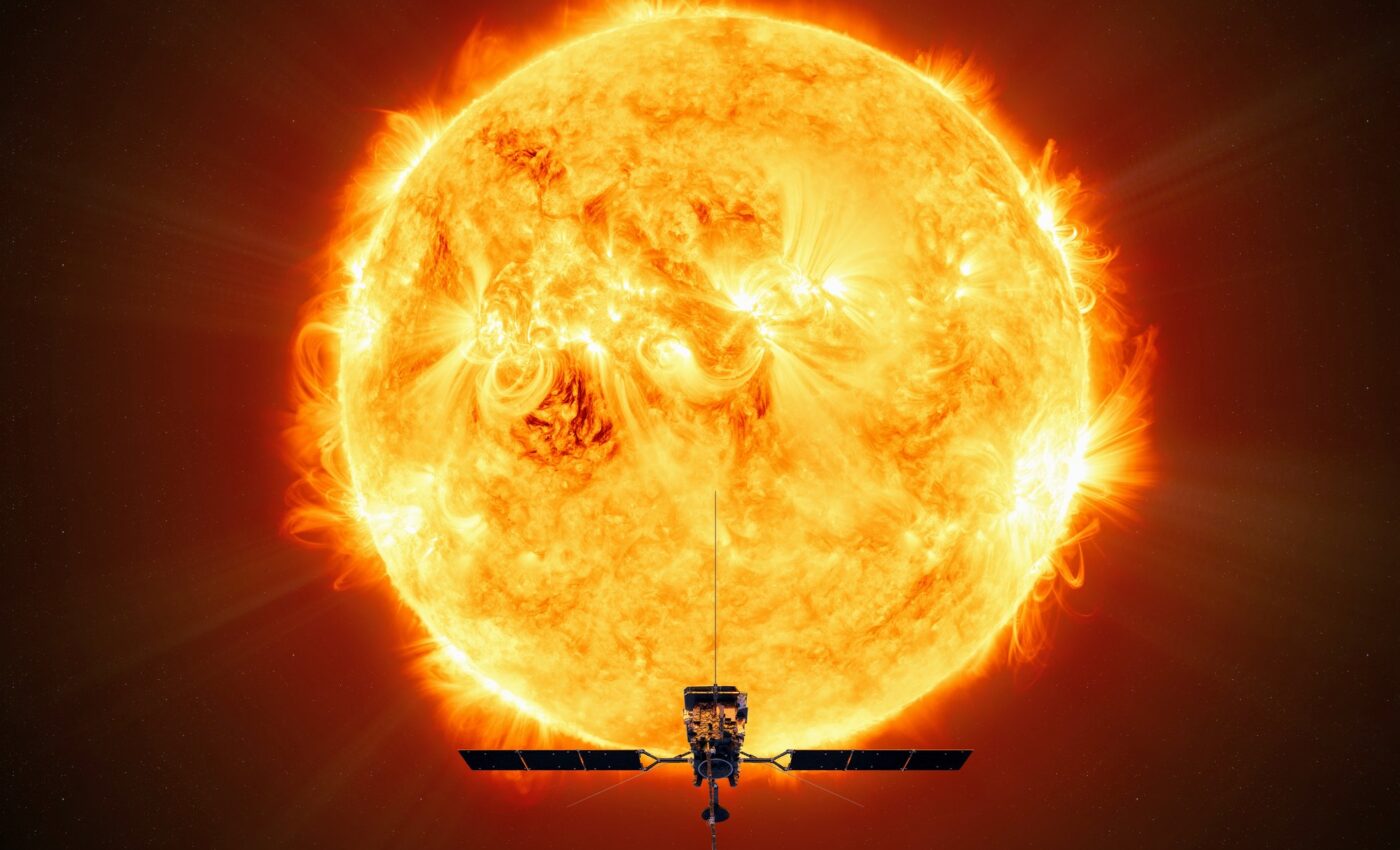
Tracing solar wind directly to its source for the first time
The European Space Agency‘s Solar Orbiter has achieved a remarkable feat, tracing solar wind back to its source on the Sun’s surface. This marks a significant step forward in our understanding of this enigmatic phenomenon.
Sun’s constant storm
Picture the Sun as a celestial powerhouse, continuously emitting a stream of charged particles known as the solar wind. This relentless outpouring is far from uniform. It fluctuates in speed, density, and composition depending on its point of origin on the Sun.
Yet, despite decades of scientific scrutiny, the precise origins of the solar wind have remained shrouded in mystery.
By the time solar wind reaches Earth, it has undergone so much mixing and transformation that tracing it back to specific regions on the Sun is nearly impossible. It’s like trying to identify the individual tributaries of a mighty river after it has flowed for miles and merged with countless other waterways.
Solar Orbiter: A game-changer
Solar Orbiter is a space mission led by the European Space Agency in collaboration with NASA. Launched in February 2020, it aims to study the Sun up close to understand its behavior and influence on the solar system.
Equipped with a suite of advanced instruments, Solar Orbiter measures solar wind and captures high-resolution images of the Sun’s surface. Its unique orbit brings it closer to the Sun than any previous mission, allowing it to collect unprecedented data.
Unlike previous missions, the Solar Orbiter boasts both in situ and remote sensing instruments. The former measures the properties of solar wind directly around the spacecraft, while the latter captures high-resolution images and other data of the Sun itself.
Magnetic connectivity tool
The challenge lies in the time lag between these two types of data. The cameras show the Sun as it is now, while the in situ instruments reveal the state of solar wind that was released from the Sun a few days earlier.
To bridge this gap, scientists have employed a clever software tool called the Magnetic Connectivity Tool. This online tool, developed specifically for the Solar Orbiter mission, uses data from a global network of solar telescopes to model how stellar wind travels through the solar system.
It essentially predicts where the Solar Orbiter will be connected to on the Sun’s surface a few days in advance.
Solar wind’s elusive origin
One of the most intriguing aspects of solar wind is its two distinct types: fast and slow. Fast solar wind, exceeding speeds of 500 km/s, is known to originate from coronal holes, regions where the Sun’s magnetic field lines open up, allowing solar wind to escape.
Slow solar wind, on the other hand, has been a tougher nut to crack. It’s associated with active regions on the Sun, where sunspots and intense magnetic activity occur, but the specifics of its origin have remained elusive.
Perfect alignment
To pinpoint the source of slow solar wind, the Solar Orbiter needed to fly through the magnetic field connected to the edge of either a coronal hole or a sunspot complex. This would allow scientists to observe how stellar wind changed its speed and other properties, confirming the connection to the right region on the Sun.
In a stroke of luck, the spacecraft encountered a perfect combination of both features during its close approach to the Sun in March 2022.
“Solar Orbiter flew past the coronal hole and the active region, and we saw fast solar wind streams, followed by slow ones. We saw a lot of complexity that we could tie back to the source regions,” noted Stephanie Yardley, the lead author of the study.
This complexity included variations in composition and temperature across these different regions, providing valuable clues about the solar wind’s origin.
Solar Orbiter’s wind research
The Solar Orbiter’s ability to connect slow solar wind to its source regions on the Sun marks a major milestone in solar physics. It confirms the spacecraft’s capability to make robust connections between in situ measurements and remote sensing data, opening up new avenues forstudying the solar wind’s origin in unprecedented detail.
This breakthrough also paves the way for future research using data from other spacecraft, such as NASA’s Parker Solar Probe and ESA’s BepiColombo.
By combining data from multiple missions, scientists can gain a more comprehensive understanding of solar wind and its impact on our planet and space technology.
Sun’s unseen influence
Solar wind interacts with celestial bodies and spacecraft throughout the solar system. The impacts of solar wind range from triggering auroras on Earth to potentially disrupting electrical systems on spacecraft.
As we venture farther into space, understanding and predicting solar wind’s behavior becomes increasingly crucial for protecting our technology and astronauts.
The achievements of the Solar Orbiter are a testament to human ingenuity and our relentless quest to unravel the mysteries of our nearest star. It’s a reminder that even after decades of study, the Sun still holds secrets waiting to be discovered.
The study is published in the journal Nature Astronomy.
Video Credit: NASA/ESA Solar Orbiter
Image Credit: ESA
—–
Like what you read? Subscribe to our newsletter for engaging articles, exclusive content, and the latest updates.
Check us out on EarthSnap, a free app brought to you by Eric Ralls and Earth.com.
—–













